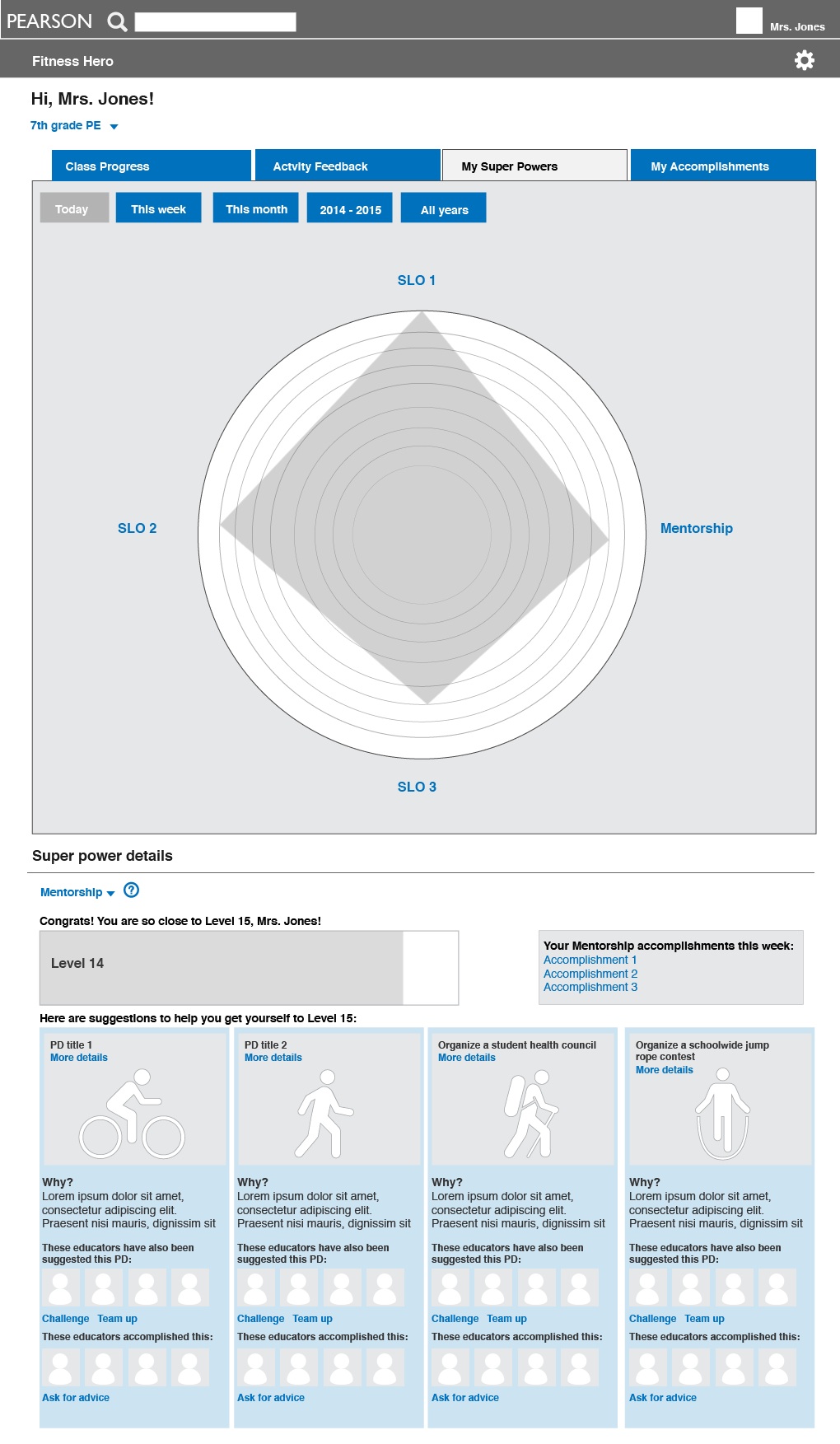
Rethinking Physical Education
Role: Senior Interaction Designer/Researcher
Team: Lead Researcher and Business Development partner
While at Pearson, I worked on an Innovation Initiative to see how might Pearson help kids be more physically active in schools.
We did a great deal of secondary research (competitive landscape and recruiting), developed a pitch for the organization, got buy in, developed question pools and held an internal brainstorm to aid in designing sacrificial concepts (sketches brought out into the field to help interview participants think and talk about abstract ideas and concepts), and then headed out to schools for contextual design research (observation + 1:1 interviews + student friend group interviews).

Sacrificial Concept #1
In order to get quick feedback on ideas we were having while out in the field, I created sacrificial concepts as a tool. We knew these ideas were only half baked, and that was the point - we needed feedback on the abstract ideas, and wanted the students, parents, and teachers we were talking to to help make them better with us.

Sacrificial Concept #2
While out in the field, we learned that students didn't just want to challenge their friends and classmates - they wanted to collaborate on challenges with them, too. This sacrificial concept was to illicit deeper feedback about that behavior.

Fitness Hero
Taking everything we learned from the contextual research (+ some guidance from additional workshops with others), one of the concepts we generated was a PE assessment/curricula (mobile app and web) concept for students. This type of physical education assessment is a departure from what currently exists in schools. In fact, this type of intuitive assessment is unique in general, and could have larger implications for classroom assessment (imagine if kids didn't have to be forced to sit at a desk 7 hours of the day).
We wanted to inspire a love of movement by rewarding kids for the movement they do everyday, not just in physical education class. The metrics measured would be the same that a PE teacher needs to evaluate, but translated into "super powers" to be more meaningful and accessible to kids.

Fitness Hero / Accomplishments
Beyond steps and calories, we wanted to reward kids for mentorship and helping others, because time and again, we heard (and saw) that there were many different levels of athleticism and not everybody's strength lies with a certain sport.

Fitness Hero / Challenges
Challenges were ways for kids to improve in certain areas. We wanted challenges to be dynamic and contextual, so if there was a 5k in the local area next weekend, it could be suggested. Or a bike ride between a student's home and school.
We also wanted to suggest activities the student enjoyed doing. It was a way to personalize the experience, and make it feel like the system listened and cared.

Fitness Hero / Cheer
From what we learned from our initial sacrificial concepts, we learned kids want to both cheer friends on and challenge them. There is so much competition in schools right now, that many students like a reprieve.

Fitness Hero / Teacher experience
Physical education teachers would have an overall view of each class, and be able to gauge where efforts should be for subsequent classes.

Fitness Hero / Individual student view
PE teachers would also be able to track each student's movement and progress in real time, and be able to coach students through the app who needed a little nudge.

Fitness Hero / Professional goals
Beyond being able to help students better, the teacher would be able to track and monitor professional goals with documented evidence from the app.

Online Resource Center (ORC)
Another concept we generated was an easy way to find and crowdsource physical activity content, because out in the field we saw:
• how difficult it was for teachers to integrate physical activity into the classroom without increasing planning time
• how difficult it was to find any lessons that used physical activity to actually inform learning (not just get kids moving)
teachers who had amazing ideas, and had come up lessons plans, but had to way to share them
• schools beginning to think like start ups, and teachers being flexible and willing to try and create lessons on the fly
This was the service blueprint for that experience - it couldn't just be a website, we had to consider the entire system this experience would be placed into, and what would be necessary to implement it.

ORC / Activity browser
Teachers would be able to add and browse physical activities for both the classroom and beyond. Activities could be filtered by subject matter, age appropriate, etc.